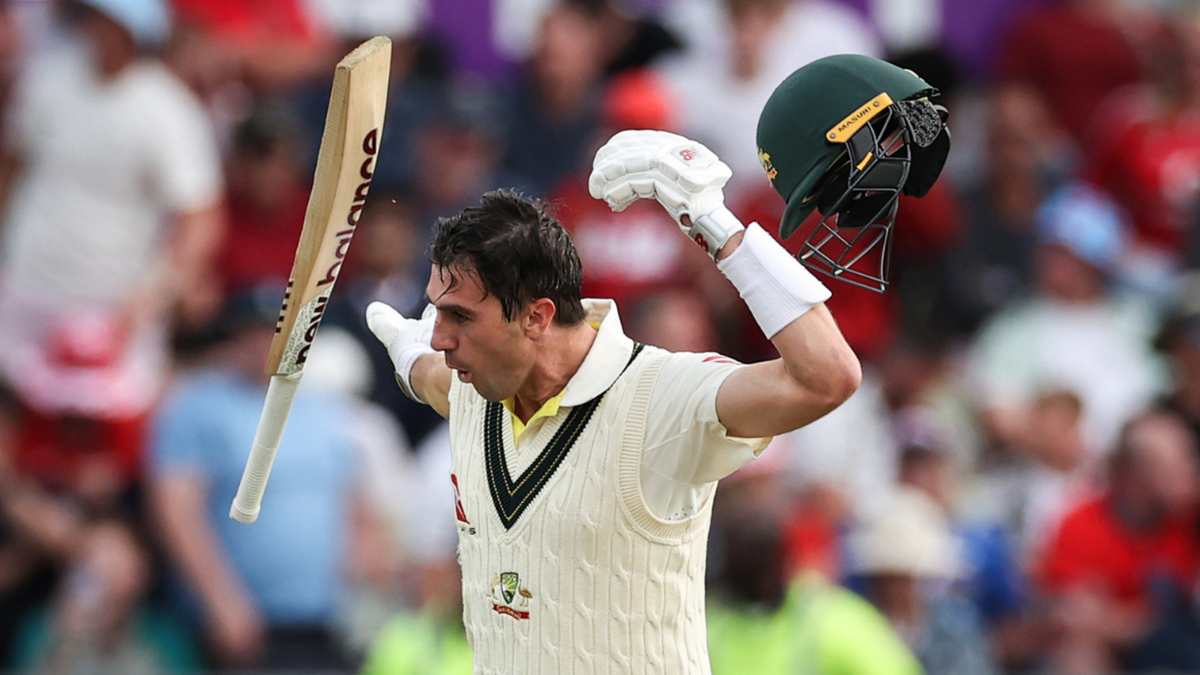
Pat Cummins and Nathan Lyon scripted a miracle win, defying Australia’s past history in thrillers, writes Ben Gardner.
You can bet on the 2023 Ashes with our Match Centre partners, bet365.

For four days, Australia’s strategy made sense. It would be easy to misconstrue it, but make no mistake: This wasn’t the disruptors versus the old world. Pat Cummins wasn’t as daring and dashing as Ben Stokes, because, well, who is? But there was courage in the gameplan nonetheless.
Everyone England have played has had their own reaction to what we must call Bazball, because there isn’t yet a better name for it. Some, like South Africa, have tried to ignore it, dare not even speak its name lest its power take hold. Others, like Pakistan, have looked to take it for themselves, mind-bending declarations and all. But Australia’s way was different. They wanted to outlast it.
From the start, fielders were on the boundary. This was bravery, not cowardice, because it was so un-Australian. The criticism, even from the reasonable former greats, was instant and predictable. And Cummins stuck with it. This is his team, and his plan. Limit the damage, let them take singles, and back them to do something silly, or your own bowlers to do something special. Just don’t lose for long enough, and by the end, you’ll win.
On the final day, however, it looked as if that wouldn’t be enough. Usman Khawaja had dug his own trench, taken camp, and found himself with no way out. The supporting cast were coming and going. Ben Stokes, on one leg, and Joe Root, a part-timer, got through 14 overs in tandem for 28 runs. The chop-ons came, Australia caught indecisive and inbetween, half bats and scrambled minds. Alex Carey went hard but not big, not high. Root dropped one and caught another.
Nathan Lyon joined Pat Cummins. The last hour arrived. Australia needed 51. It looked like a mountain.
Up until now, this had been a familiar tale for Australia, and for these two in particular, the spearhead and the pantomime villain. This is a team filled with great cricketers, but not yet a great cricket team, and it’s their inability to close out close games that has counted against them. Seven years of David Warner, Steve Smith, Pat Cummins, Nathan Lyon, Josh Hazlewood and Mitchell Starc had brought one overseas series win and three reversals at home. Pick through each of them and you’ll find opposition teams on the canvas but not finished off, and Australia unable to land the killing blow. The Gabba 2021 stands out, as does Headingley 2019, with Lyon fumbling and Cummins cut away for four.
December 2016 was the last time Australia won by fewer than 100 runs or six wickets. They had lost five such games in that time (England themselves had won 10). If they didn’t win big, they didn’t win. If a game got close, it was already over. And as they crabbed and blocked and left and scrambled, it looked as if the streak would continue. With England’s attack depleted and tiring, this would enter the annals alongside the other heartbreaks.
In the space of three balls, everything changed. Stokes kept Root on with the old ball. Was this a first blink in 12 months, his eyeballs dried and bloodshot, running on vibes and caffeine? Keeping on the offie had, an over ago, been a masterstroke. Now it looked a misstep as Cummins charged. Twice, Root was marmalised into the stands. The target was down below 40. And all of a sudden, it was England under pressure. Maybe they do care about losing after all.
The decisive moment arrived seconds later. Broad went short. Lyon hooked, without control. Stokes flung himself. The ball was in. Ben Stokes, you cannot do that! Ben Stokes, it turned out, could not do that. It took Broad a beat to realise it had been grassed, that the one chance they needed had come and gone.
The new ball was resisted but Australia kept coming. Cummins carved Broad for four. The new ball arrived and Australia kept coming. Lyon pumped Robinson down the ground. The heat cranked up one more notch as Zak Crawley fumbled into the rope. Lyon and Cummins had been in these situations before. OK, they had largely come second in them. But the feelings, the flutters, these weren’t new. Maybe that matters, and maybe it doesn’t. If the ball sticks in Stokes’ claw, everything is different. As it was, Australia needed 16 and were doing it easy.
Then came the gap in the lightning storm, as England went short, Cummins and Lyon ducked, and two cricketing cultures held their breath. There was one punctuating thundercrack, Lyon dismissing Broad over mid-on, a laughable stroke given the circumstances, but the tension was back up with the finishing line in sight. Once again, the only runs were squirted, dug out. England aimed for the throat and the toes.
There was, in the end, nothing emphatic about the winning the stroke. It was a steer down to third man, the kind of stroke that brings a single usually, and perhaps should have now. But England were scattered and funky. Harry Brook slid but couldn’t stop it.
It was, in its own way, the perfect end. Australia hadn’t arrived looking to outgun England, but to survive them. Wait for the errors, and the errors will come. They turned up backing the thing that the runs and wicket columns don’t reveal, and the thing that had failed them so often: their nerve. And they were gloriously, stunningly vindicated.








